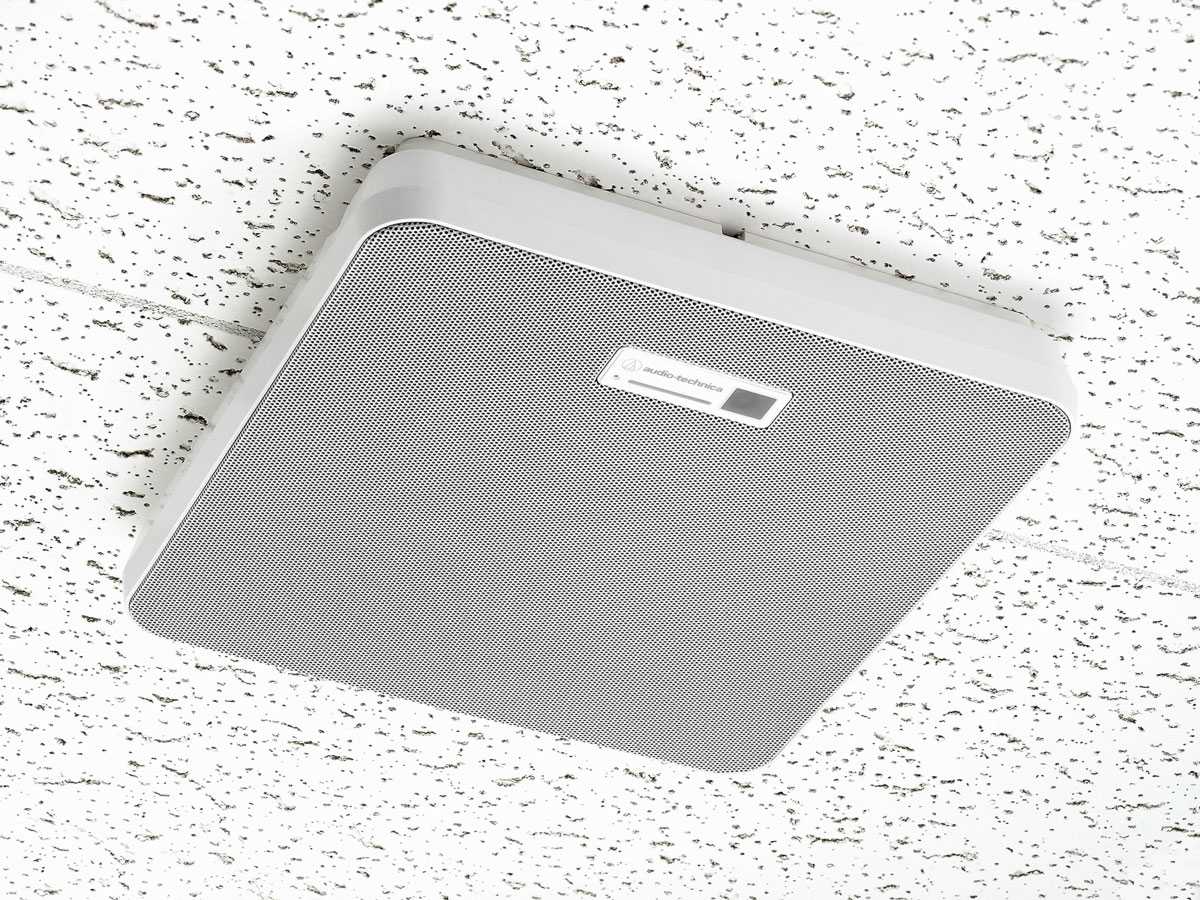ISE 2024: A-T shows beamforming microphone
- Details

A solution for conference rooms, boardrooms, lecture theatres and more, the ATND1061LK searches for the speaker’s position, allowing for accurate tracking of - and switching between – participants who move during meetings or presentations. It also detects unwanted sounds during a meeting and automatically adjusts the beam so that it is not pointed in that direction.
The ATND1061LK can be flush- or surface-mounted in a drop ceiling or hard ceiling or mounted in open architecture spaces via a standard VESA mount. The microphone is UL 2043 compliant for installation in plenum spaces.
The ATND1061LK includes two connections for integration into an Audio-Technica Link daisy chain setup, as well as a network connection for configuring the individual room settings. A notable benefit of Audio-Technica Link is the reduced number of audio cables required. By utilising general-purpose LAN cables, the protocol eliminates the need for multiple analogue audio cables for multi-channel transmission, significantly simplifying cable management and installation processes.
In common with the original model, the ATND1061LK delivers both operational flexibility and ease-of-use. The microphone’s Output Channel 1 can be configured with 16 user-defined Coverage Zones, within which a meeting participant may be seated or moving while speaking. Only one of the 16 Coverage Zones can be open at a time, with the microphone automatically selecting the zone with the strongest signal identified as speech.
In addition, it is possible to set 16 user-defined priority zones. Priority zones ensure that the voices of participants in that zone, whether seated or moving, take precedence over those in the coverage zone. Up to five priority zones can be open at a time, and in each zone the strongest signal recognised as speech is selected. Audio-Technica’s voice activity detection (VAD) technology enables the microphone to discern between a voice and unwanted noises such as paper shuffling.
Room configuration, zone setup, and other settings are handled through the user-friendly Digital Microphone Manager software application. For integrations without external digital signal processing (DSP), the ATND1061 features powerful onboard DSP, including automix, acoustic echo cancellation (AEC), noise reduction, automatic gain control (AGC) and 4-band EQ.
















